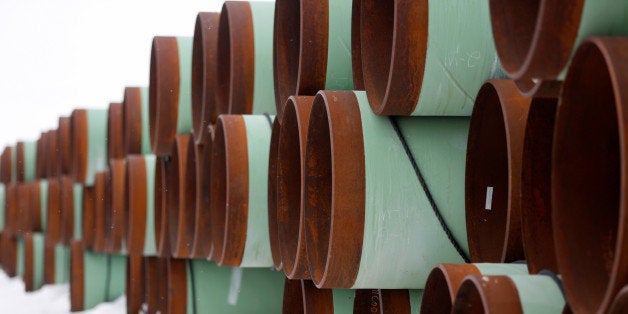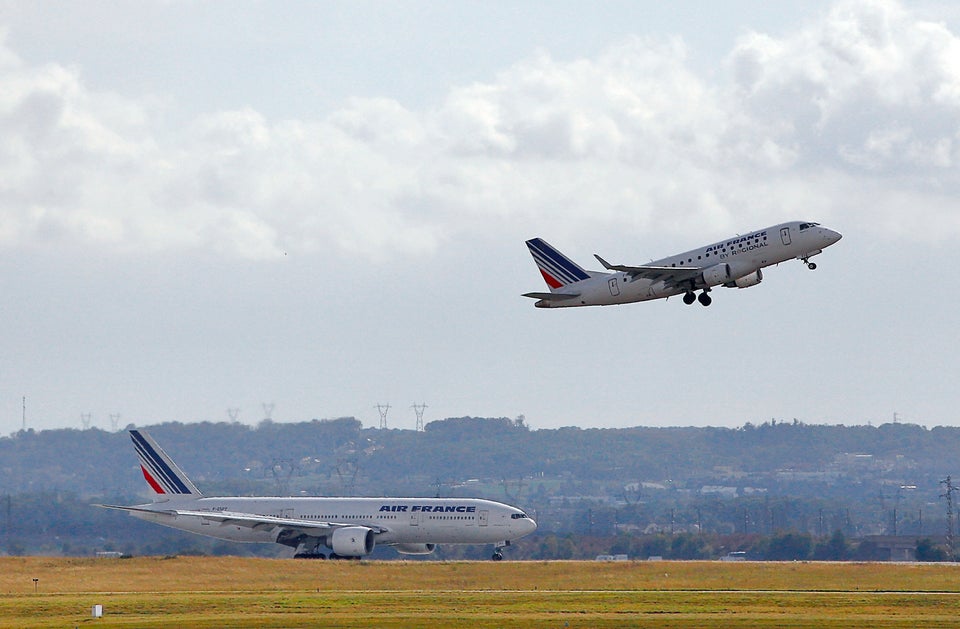
WASHINGTON -- The Keystone XL pipeline section from the oil transport hub of Cushing, Okla., to the Texas Gulf Coast is plagued by construction problems, code violations and improper inspection and shouldn't be allowed to operate until the government steps up oversight, the watchdog group Public Citizen argued in a report Tuesday.
The report, compiled with documentation from landowners along the pipeline's Texas portion, said the roughly 500-mile section of pipeline has problems that include dents, sags and damage to the coating. Public Citizen claimed pipeline owner TransCanada's failed internal processes, and its history of unreliable pipelines, should push the federal government to require more testing before the Keystone XL southern leg is allowed to start operating.
“The government should investigate and shouldn’t let crude flow until that is done,” said Tom “Smitty” Smith, director of Public Citizen’s Texas office, in a call with reporters on Tuesday. “Given the stakes -- the potential for a catastrophic spill of hazardous crude along a pipeline that traverses hundreds of streams and rivers and comes within a few miles of some towns and cities -- it would be irresponsible to allow the pipeline to start operating.”
While plans for Keystone XL's northern portion, from the Alberta tar sands in Canada to Nebraska, are stalled awaiting the Obama administration's decision, construction of the southern portion is almost finished. Public Citizen has called on Congress to hold hearings on problems raised by the report. Lawmakers have not responded, Smith said.
The report urges U.S. pipeline regulators to review TransCanada's quality assurance procedures and to require the company to use hydrostatic testing to check pipeline strength with water pressure, and an inline inspection using a computerized probe, before the southern portion can begin operating.
Parts of the Keystone XL southern extension have been excavated for repairs, the report said. In a 250-mile stretch through Texas, there have been more than 125 excavations due to possible "anomalies," including dents and sags, the report noted. Pieces of the pipeline that are replaced are not tested as thoroughly as those in the initial construction phase, the report said.
"We have observed that TransCanada had marked some of the areas to be excavated with stakes marked with the word 'anomalies,' coupled with the companion stakes marked 'dent' and 'welds' or other descriptive markers in the ground where the potential problems have been detected," the report said.
The anomalies may signal weak spots in the pipeline that can lead to leaks of oil. The southern segment crosses 631 streams and rivers in Texas, said Smith. Dents, for instance, can occur when the pipeline is placed in a trench with rocks, where it cannot lie completely flat. The dent can lead to cracks, which increase the probability of leaks or rupture, the report explained.
TransCanada has claimed that its pipeline is safe and that its safety review includes 57 special conditions from the Pipeline and Hazardous Materials Safety Administration, including "increased pipeline inspections and pipe that is buried deep in the ground."
TransCanada spokesman Davis Sheremata dismissed the Public Citizen report's claims. "This 'report' doesn’t really contain anything new -- it is an amalgamation of subjects we have dealt with and responded to in the past," Sheremata wrote in an email to The Huffington Post. He pointed to a blog item the company posted five months ago and said the discovery of anomalies and the resulting repairs proves the company is doing its job.
"If you use more stringent measures to find anomalies as we are doing, you going to find more anomalies," Sheremata wrote. "Making sure that each weld, each section of pipeline and all of the facilities are built to the higher standards we have agreed to is what the public would expect of a responsible company." He said the southern extension "will be the safest pipeline built in the United States to date."
But Evan Vokes, a former TransCanada engineer who contributed to the report, said the company does not always follow its own construction standards. "If you followed the code, you wouldn't have these problems," he said.
David Whitley of Winnsboro, Texas, said he saw pipeline problems on his land when TransCanada contractors who installed the pipeline returned and excavated a 30-foot to 40-foot section. "It kind of changed my attitude to see what was running underneath my property," said Whitley, who said he initially supported the pipeline construction.
Whitley said there were big red labels on the excavated section of pipe marked "dent" and "cut out." He said he is concerned that the rock that created the dent hasn't been removed and may cause the new pipe to leak.

